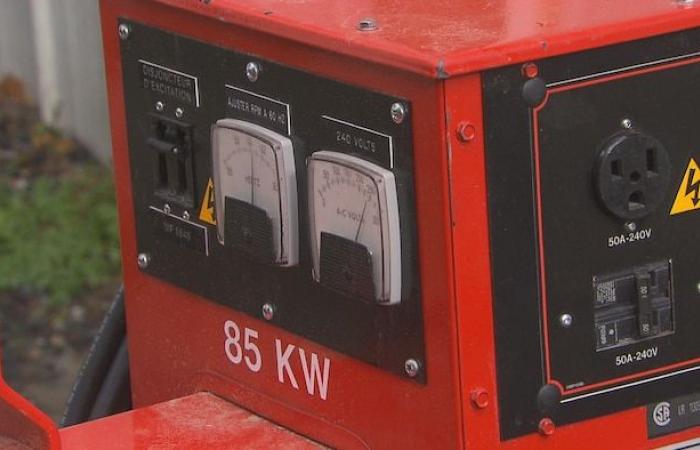The cost of electricity in the northwest territories as well as the power cuts weigh on the Ténois.
Monday, a power outage affected the localities of Fort Smith and There are River to the Northwest Territories.
If the electricity was restored after half an hour to There are Riverit took several hours for the rescue generators of Fort Smith Take the relay, according to a press release from the Energy Society of the Northwest Territories (NTPC).
The northwest territories have the reputation of having frequent power cuts coupled in the fact of having to pay the latter more expensive than everywhere in Canada.
The Energyhub.org site (new window) which analyzes and lists the data on electricity thus classifies the T.N.-O. In the last position among the provinces and territories, with an average price of 41 cents per kilowatt/hour (kWh).
According to data from this site, and as a comparison, the price is 7.8 cents in Quebec, 11.4 in British Columbia and 18.7 in Yukon. An electricity bill can thus reach up to $ 410/month for a Ténois which uses 1000 kW.
For Jean-Paul Pinard, an engineer specializing in energy and wind turbines, this situation is explained by the significant use of generators in diesel and an aging infrastructure.
However, according to the government of the Northwest Territories, 75 % of the electricity produced in the territories comes from hydroelectric power plants, one of the least expensive sources of energy production.
Asked to understand this apparent contradiction between mainly hydroelectric electricity, and high prices, the NTPC replied in an email that it was complicated to compare hydroelectricity to the territories, and that in the rest of the country.
-Open in full screen
Diesel generators are extremely expensive for Ténois. (Archives photo)
Photo : Radio-Canada
According to the NTPCthe Robert-Bourassa hydroelectric power station in Quebec can produce up to 5,616 megawatts, that of Limetone in Manitoba can provide 1330 megawatts. For its part, the largest hydroelectric power station in the Northwest Territories is that of Taltson, which can generate up to … 18 megawatts.
NTPC Recalls that the electrical network of the Northwest Territories is not linked to the rest of the North American network, which its electricity sales have declined with the decrease in the population of the territories, while its costs have increased.
The company also says that part of its infrastructure is not only aging, but that it approaches its end of life, and that it needs big investments simply to replace it.
Finally, she regrets having an extremely large territory to cover, but with small communities that are not numerous enough to be able to save scale. Many of these communities use electricity produced only in diesel, for lack of other sources.
For Jean-Paul Pinard, the high price of this electricity is also explained by the fact that the inhabitants of the region of Yellowknifewhich mainly use hydroelectricity, fund the energy of other communities by their invoices.
In the strategic plan (new window) presented by NTPC To improve the situation by 2030, the emphasis is placed on the development of renewable energy sources, new power lines to better connect the dams to the communities and the expansion of the Taltson hydroelectric power station.







